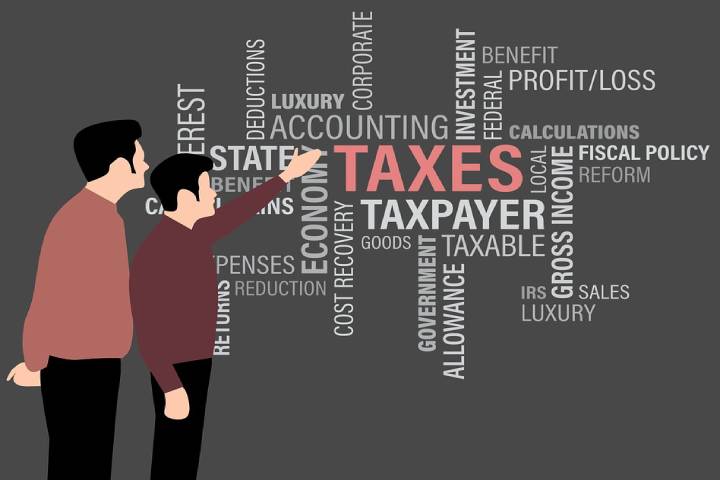Business
A Simple Instance Of How The GST Regime Operates
A Simple Instance Of How The GST Regime Operates, The pre-GST regime of Indirect Taxation in India was characterized by a lot of red tape and complexity

The GST regime has been a game-changer in the sphere of Indirect Taxation in India. The pre-GST regime of Indirect Taxation in India was characterized by a lot of red tape and complexity.
There was a multitude of taxes and cesses which were in operation and had to be taken care of in a haphazard and disconnected manner by businesses. The actual rate of taxes on many products was almost impossible to determine for the average consumer, which was terrible for transparency.

With the introduction of the GST system, all of those taxes were subsumed under the Goods and Services Tax, with a few exceptions. This drastically cut the number of taxes that businesses and consumers had to keep track of.
The Goods and Services Tax also was a game-changer in the field of Information Technology concerning taxation. Previously, there was almost no way for the Government to track down all of the transactions and invoices which were generated throughout business every day.
But, with the introduction of the GST, the entire system has now migrated online, so a GST invoice is now online and easily trackable by both the Government, as well as the business on the GST portal, which runs on the GSTN (Goods and Services Tax Network). This has increased transparency and compliance.
The GST is a comprehensive indirect tax affecting almost all goods and services in India, barring few items which have been kept outside the purview of the tax. It has several features which are illustrated below:
Table of Contents
1.Basic Overview:
The GST, as mentioned above, is a comprehensive tax, a single tax that has subsumed almost all of the taxes and cesses operating under the previous tax regime. GST was created to simplify procedures and create a transparent system of Indirect Taxation.
To this end, the GSTN Information Technology network was created to make the entire system online. Various forms need to be filled by businesses that are dependant on the type of business and turnover.
Unlike the pre-GST regime, a GST invoice generated in the course of business needs to be uploaded onto the GSTN network by both the supplier and the dealer who purchases the goods to be sold to the consumer. This ensures compliance.
2.Controlling Body:

The GST system is controlled by a unified body called the GST Council. This body monitors the GST to ensure everything works smoothly. From time to time, the council publishes revisions to the tax structure when it feels that certain elements need to be revised. This is usually done in response to market conditions or anticipation of future market conditions.
3.GST Structure:
The GST is structured into slabs. There are four underlying slabs under the GST regime. On top of that, there is a fifth slab, which is essentially an exempted item slab, which includes items that have no GST attached to them.
The 4 major slabs are :5%, 12%, 18%, and 28%. Everyday items are placed in the lower slabs while sin goods and luxury items fall under the highest 28% slab. Some examples of items within the various slabs include vegetables, milk, honey, bread, etc. under the exempt category.
Items like apparel costing less than INR 1000, frozen vegetables, coffee, tea, etc. under the 5% category. Frozen meat, butter, cheese, ghee, etc. under the 12% category. Cakes, pasta, biscuits, mineral water, etc. under the 18% category. Things like pan masala, aerated drinks, aftershave, etc., fall under the highest 28% category.
This list keeps on changing, and for the latest information, official records are available with the current GST rates in effect.
4.Forms:
As briefly mentioned above, there are various forms under the GST system which need to be filled when filing returns. The dates in which those forms are due are also published on the official GST council website.
The current forms need to be filed range from GSTR-1, which details all outward supplies of goods and services, GSTR-2, which describes all of the inward supplies of products and services right through GSTR-9, which is the annual return to be filed by registered taxpayers. The GST council website has detailed FAQs regarding the filing of the forms.
The GST forms will be changing from April of 2020, and many of the ways will be done away with in favor of new forms, so businesses must keep track of the changes being announced by the GST council.
Conclusion:
The GST regime was created to ensure tax compliance as well as tax transparency in the Indian economy. By employing digital tax returns and online GST invoice processes, the Government has tried to create a simplified tax regime to replace the complicated old one.
There are many more aspects of GST that can be reviewed online on the official website as well as other websites containing updated information.
-

 Instagram4 years ago
Instagram4 years agoBuy IG likes and buy organic Instagram followers: where to buy them and how?
-

 Instagram4 years ago
Instagram4 years ago100% Genuine Instagram Followers & Likes with Guaranteed Tool
-

 Business5 years ago
Business5 years ago7 Must Have Digital Marketing Tools For Your Small Businesses
-

 Instagram4 years ago
Instagram4 years agoInstagram Followers And Likes – Online Social Media Platform















